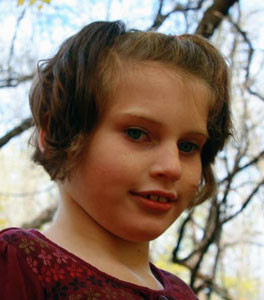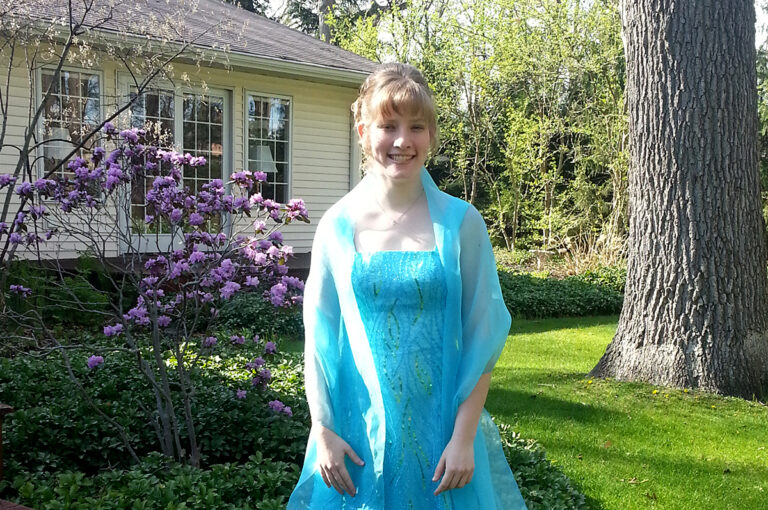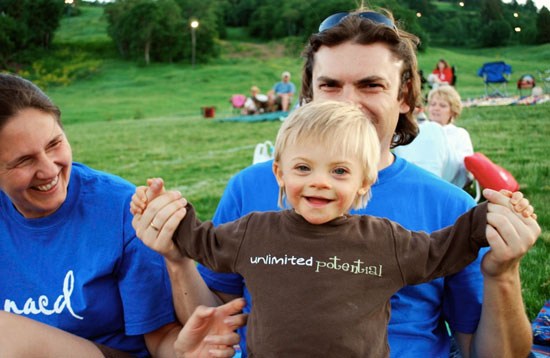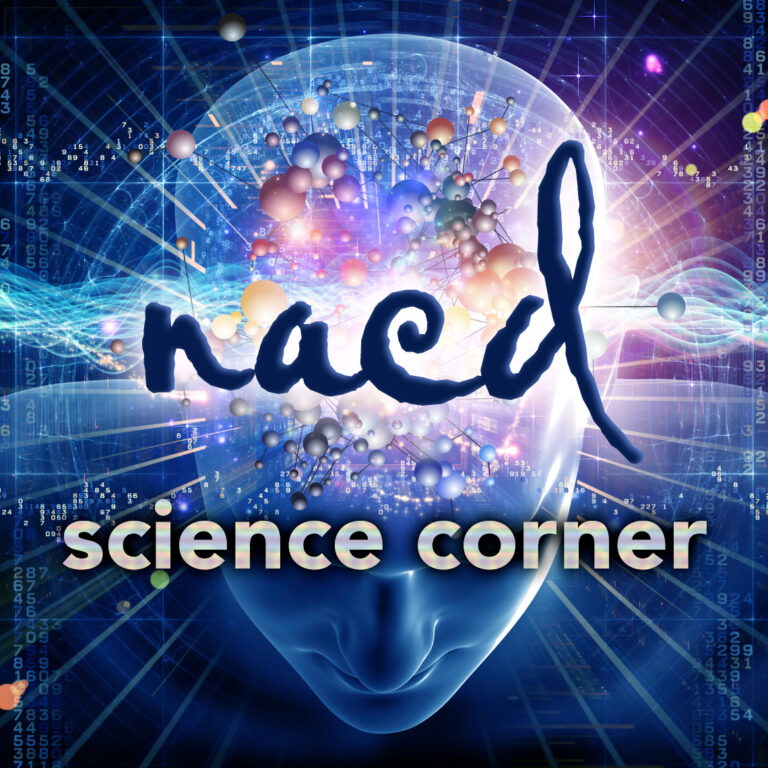From One NACD Mom to Another: Encouragement to Join the “1,000 Hats” Club
by Lisa Jamieson, Co-author of Finding Glory in the Thorns
 As a mom, I wear many hats. As an NACD mom, I’ve worn even more. And just like our ever-changing Minnesota weather seasons require different kinds of hats, my life’s seasons often require that I take on different roles and wear different “hats” to make sure my daughter Carly’s program gets done as effectively as possible. Some seasons are busier than others and don’t lend themselves very well to the role of “Chief Program Implementer.” I used to think that was my primary role. I have come to realize that there is only some truth to that.
As a mom, I wear many hats. As an NACD mom, I’ve worn even more. And just like our ever-changing Minnesota weather seasons require different kinds of hats, my life’s seasons often require that I take on different roles and wear different “hats” to make sure my daughter Carly’s program gets done as effectively as possible. Some seasons are busier than others and don’t lend themselves very well to the role of “Chief Program Implementer.” I used to think that was my primary role. I have come to realize that there is only some truth to that.
I have discovered there are all sorts of benefits in wearing different hats for different seasons — both for me and for my family. Being flexible about which roles I focus on from season to season has proven refreshing to me, helpful for my family, and intensity boosting for Carly. For example, there was a season of about 8 weeks during which I was recovering from a hysterectomy. During that time, my role was Volunteer Coordinator. While the quality of Carly’s program time wasn’t always what I wanted it to be, it proved valuable that I chose to get help rather than risk hurting myself or get no program done at all.
Right now I am in a season that requires me to work full time. Yet Carly still does about four hours of program each day around attending public school part time. So my role in her program is much more detached. There’s a lot about that which I don’t like very much, and I can tell she misses me too, but I am incredibly blessed to have found a woman to help me who is functioning like my right arm in getting program done. And, while I don’t like to admit it, there are a number of things she is much better at than I am. So, for now, my role is more like “Cheerleader” and “Supervisor.”
The benefits of getting help with Carly’s program and being willing to shift roles with the seasons have extended well beyond our family too. In fact, the ripple effect of things learned and lives changed has convinced my family and others that reaching out and working in community creates a beautiful picture of what life was meant to be.
For many of us, asking for help is one of life’s hardest things to do. My husband and I think it’s even harder than finding help, which is no small task in itself! North American’s take great pride in self-sufficiency. I am personally a very independent person and have high expectations about what I want to get accomplished on any given day. So when Carly was experiencing serious developmental delays and needed intensive therapies to help her thrive, I did not take easily to the idea that our family would need help. And it was not to be just a little help here and there, but lots of help of all different kinds, from all sorts of people, and for a very long time.
In the early days of Carly’s program, over 60 people reached out to help us and what happened was profound. At first, about 15 people signed up when we sent out neighborhood flyers and spoke in front of our church. But within a few weeks that number tripled as people caught a vision for helping a cute but struggling little girl reach her potential. Most of them came for one hour-long shift each week. Some of them stayed longer than that. As Carly reached new stages of development and our other daughters got older, the need for such a large team shifted. So more recently, our help has come in new ways. For example, neighbor kids, home schooled friends, and cousins help Carly’s siblings make therapeutic videos. I am no longer Script Writer and Videographer but simply Producer. With each new person that steps in to help out, Carly perks up and engages with fresh eyes and ears. Then when I step back into the Implementer role, she has great anticipation for grand new adventures with mom.
Carly’s doing public school part-time has up sides and down sides too. Admittedly, wearing the Education Coordinator hat is often tedious and discouraging. Yet one undeniable advantage is that her involvement in the school system exposes many people to new ways of thinking about how children learn and how much they can learn!
Opening our home, hearts, and life up to including others has not always been easy. Wearing the hats of Recruiter, Trainer, Scheduler and Motivational Speaker for the “team” has often sapped me of time and energy. We often feel vulnerable, stressed out, and even resentful that we lead such a highly visible and, as our oldest daughter calls it, “high maintenance” life. Asking for help and facing possible rejection always seems harder to do than completing eight sequences a day. Yet eight years of asking for help and being willing to receive it, then talking about the benefits so others can catch the vision has proven over and over again to be extraordinarily worthwhile!
Carly has already accomplished numerous developmental milestones, many of which were not expected for someone with the diagnosis of Angelman Syndrome. But even more unexpected than that has been the ripple effect of learning and healing that has touched the people around Carly. A volunteer weakened by a stroke learned things that helped her get stronger and regain function. One teenaged girl who had been struggling her whole life with stress, inattention, and emotional outbursts got her driver’s license and went to college. A friend’s daughter graduated out of special education. Other parents and grandparents are discovering educational strategies that are opening new doors of opportunity for their challenged kids. Kids are learning that spending two hours making a video for Carly is helping her learn to approximate words when the medical community said she would never talk.
Over the years, many who have appreciated how much that living life so near to Carly and our family has taught them have thanked my husband and me. I cannot begin to tell you what it feels like to know that our challenges and willingness to let others be intimately involved have served great purposes like building character, changing perspectives, improving attitudes, inspiring risks that have led to yet more ripples of life change — for others and for us. That is not meant to be boastful but time-tested encouragement to recognize the value in working together. Even better things can come when we resist the urge to hunker down and try to do it all ourselves.
I remember the good old days of NACD telephone conferences. One night, as dozens of us listened in from around the world, Bob Doman sang the praises of soliciting help from 12-year-old girls. He proceeded to explain that preteen girls have an uncanny knack for making program fun and motivating our kids. He urged moms to put their marriages first, utilize program helpers, and be proactive in taking on the role of Facilitator and Champion for our kids. He urged us to remain flexible about the roles we take on with our child’s program. I wanted to unmute the phone line and chime in “yes, yes, yes!”
I get so excited when I hear stories about the great things that are happening when NACD programs are supported by teams — family teams, community teams, little teams, big teams, public school teams, expert teams, novice teams, passionate teams. Making teamwork work means somebody, probably mom, is wearing a few dozen extra hats but it is so worth it. For the respite it ultimately provides, for the intensity accomplished, for the marriages it saves, for the opportunity siblings get to experience a little more of mom, for the visibility it gives to an awesome program like NACD, for the joy of sharing the journey, it is a gift I treasure and hope many others will share!




